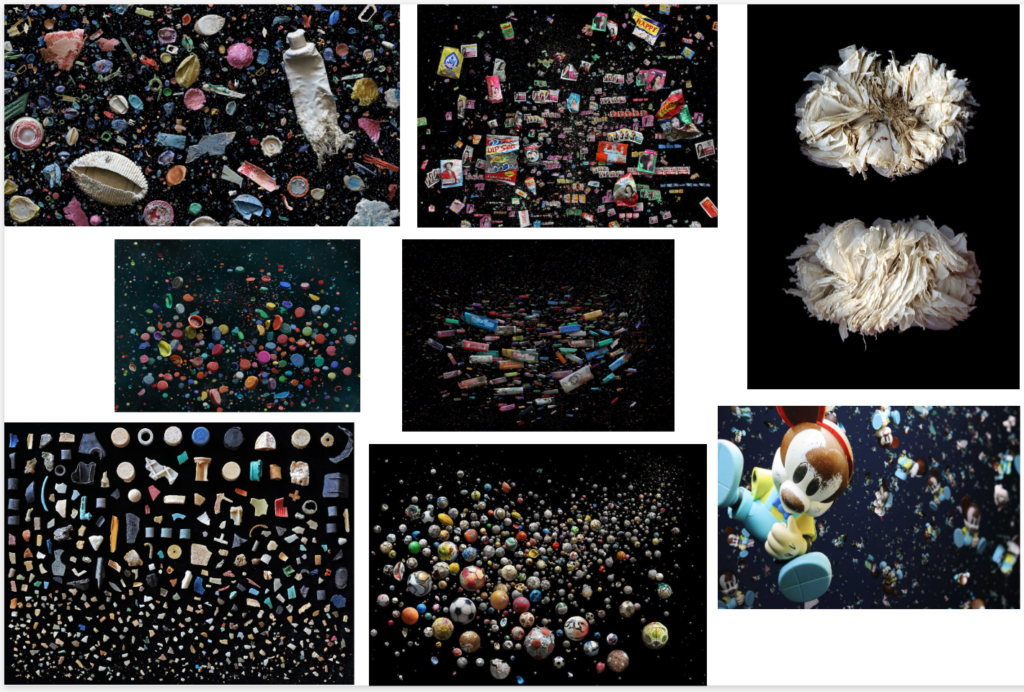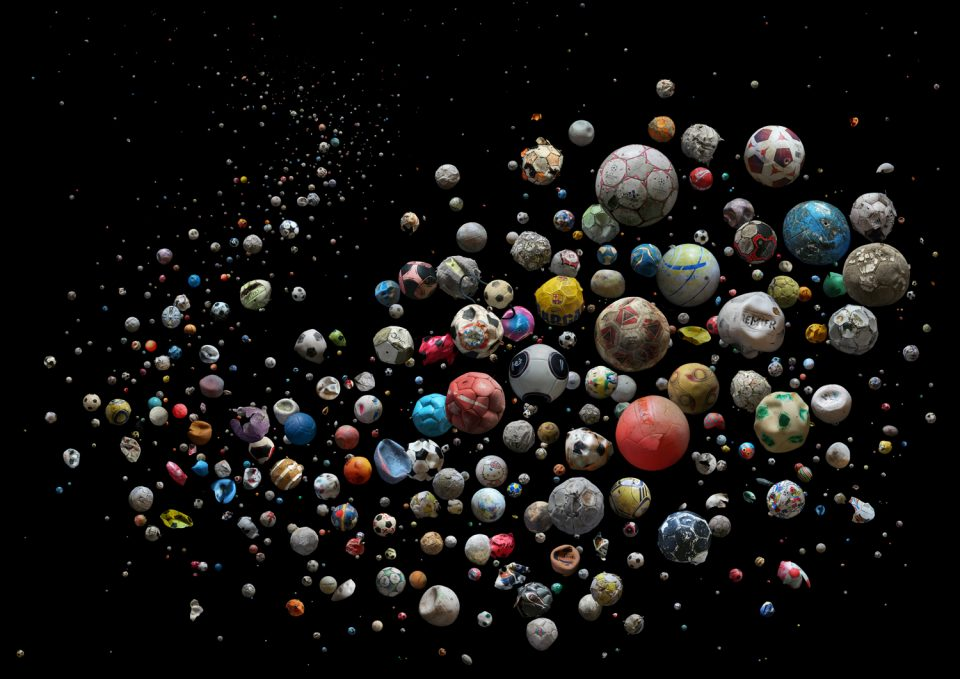
Mandy Barker is a British contemporary artist whose work is primarily focused on environmental issues, particularly marine pollution and the impact of human activity on the oceans. She uses photography to capture and transform the visual qualities of marine debris, creating powerful, thought-provoking works that bring attention to the crisis of ocean pollution. Her work often consists of large-scale, meticulously arranged photographs of items like plastic waste, fishing gear, and other waste which she collects herself from various beaches and oceans across the world.
Barker’s artistic practice blends a deep concern for the environment with an aesthetic sensibility that has a strong connection to abstract art. One of the key features of her work is her ability to take the debris, which might otherwise be overlooked or discarded, and reframe it into something visually striking, sometimes resembling intricate patterns or geometric forms. Barkers method shares similarities with Cubism, particularly in how the subject matter is deconstructed and then reassembled to create a new meaning. Cubism, as pioneered by artists like Pablo Picasso and Georges Braque, revolutionized the art world by breaking down objects into fragmented, abstracted forms and representing them from multiple viewpoints. This technique emphasized structure and geometry, highlighting the relationship between space, form, and perception.
In a similar way, Mandy Barker’s compositions take seemingly chaotic, discarded objects and arrange them in a way that presents a new kind of order, transforming them into complex, almost geometric patterns. In some of her series, such as “Seas of Shame” or “Beyond Drifting”, the discarded plastic and debris are intentionally arranged in flat, circular or grid-like forms. The juxtaposition of these debris items creates a kind of visual abstraction, where the viewer is encouraged to see the everyday, the discarded, and the neglected in a new, more intentional light.
Barker’s ability to arrange the debris in such a way that it appears abstract and geometric also links to Cubism as it shows the deconstruction and reassembly of form to create a new unique form. The objects, though once part of the natural world, are now transformed into art that comments on both human impact and the debris of modern life, just as Cubism redefined how we view the world and objects within it.
Soup (2013)
Mandy Barker’s “Soup” (2013) is a powerful photographic series that tackles the issue of marine pollution, specifically focusing on plastic waste in the ocean. The title “Soup” is a reference to the growing, pervasive “plastic soup” floating in the world’s oceans, a term used to describe the accumulation of plastic debris that floats and breaks down into smaller pieces in the water. This series emphasizes the shocking scale and complexity of ocean pollution, where plastic items such as bottle caps, create a visual representation of waste that is not only disturbing but also beautiful in its abstract composition, a way to catch the viewers attention.
Analysis

This piece by Mandy Barker is made up of many balls which she found discarded on beaches across the world. All of which are different colours which captures the viewers attention. The way Barker has intentionally arranged each of her images beautifully to create the look of a galaxy also captures the viewers attention and causes them to look closer and see the meaning of the image which is not so beautiful. This unique composition makes the image stand out from normal photography it almost makes the image look like it is moving. Barker has created both depth and movement with her clever placement of the images. Placing her photos against a black background also makes it stand out more and adds to the look of a galaxy. This piece could also resemble a school of fish swimming, as this also links to her whole theme of the ocean. It could show that if we carry on littering and having little care for what we put in the ocean instead of it being home for fish it will be the home for plastic.
How will I respond?
I like Mandy Barkers work as it is eye-pleasing and I also like her meaning and reason behind it all. I am going to use Barkers unique method and technique to photograph plastic wastage which I will ask my family to keep hold of for me. This will show just how much plastic people go through in short amounts of time. I will then use these images to create collages like Barker’s soup series.
